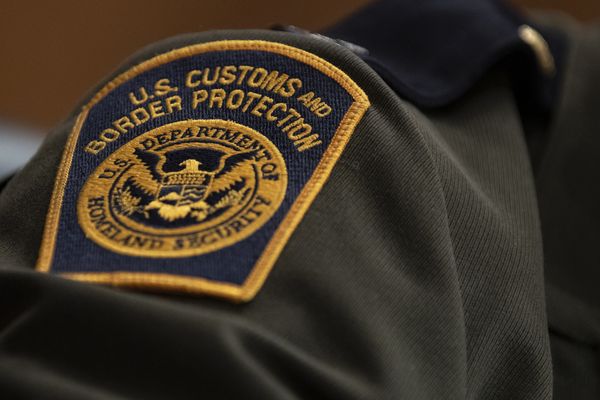
The "Mr. Musk Goes to Washington" spectacle is a headline-hogging mega-story, but you’ve probably never heard of the second-biggest business figure slated to serve in the Trump administration. He’s Frank Bisignano, CEO of payments processing colossus Fiserv, whom the new president has anointed to head the Social Security Administration. Put simply, Bisignano boasts an unmatched record as a crisis manager. He rebuilt Citigroup’s decimated back-office operations from the ashes of 9/11, repaired Washington Mutual’s stricken subprime book after the 2007 housing meltdown as Jamie Dimon’s fixer at JPMorgan Chase, and transformed a lumbering warhorse that was one of the worst investments KKR ever made into a potent money spinner that he merged into Fiserv, then drove the combo to reign as America’s largest non-bank handler of credit card payments to retailers, restaurants and other merchants, ferrying $2.5 trillion in payments per day.
Following his Senate confirmation—which appears a sure thing—Bisignano will head another payments titan that’s as renowned for its inefficiency as its programs are revered for their crucial support of America’s seniors. Here’s an organization that pays $1.5 trillion in annual benefits to over 70 million retirees, survivors, and disabled elders each year; yet for the constituency whose lifestyles hinge on its services, it remains consumer-unfriendly territory, keeping frustrated callers on hold for lengthy wait times and taking way too long to roll out new services that, once they appear, are hard to use. Federal watchdog groups and the Republicans now holding majorities in both houses in Washington regularly criticize the SSA for failing to deliver on plans to upgrade its outdated computer systems, and for high levels of turnover, both among the rank and file and for a virtual revolving door of commissioners.
The principal target is SSA’s subpar customer service. At a House Oversight Committee hearing on Jan. 5, Clay Higgins (R-La.) pounded the issue in grilling former Commissioner Martin O’Malley, who’d resigned six weeks earlier. Higgins waved his cell phone blaring the tune that kept clanging while, the Congressman claimed, he waited on hold for one hour and 28 minutes after ringing the SSA’s 800 number. “This is what our elders have to listen to!” charged Higgins. “The reason our elders call is because they need help, not because they want to listen to elevator music! The first five minutes is instructions to get to various websites. They’re alone, confused, and scared.” At the same hearing, Republicans roasted O’Malley for signing an agreement in the last days of the Biden administration that extended the COVID-period rules allowing employees to work from home two to five days a week.
To be clear, Bisignano’s job won’t involve advocating for changes needed to put Social Security on a safe financial footing. Conservatives argue that the program is exhausting its reserves at the pace that may approach $100 billion a year and, sans reform, will lack the funds to maintain payouts at current rates starting around 2035. Critics charge that keeping the system fully funded thereafter would require a severe reduction in benefits, or a big increase in the payroll taxes that support the payments. Only Congressional legislation can alter the mandated Social Security benefits and the taxes that support the outlays.
Instead, Bisignano will be running SSA as a day-to-day operator. His charge will be far different from Elon Musk’s role as head of the newly named U.S. DOGE Service (originally the Department of Government Efficiency). Frank’s the micro to Elon’s macro. On his first day in office, Trump brought DOGE, originally planned as a non-government special commission, inside as an arm of the executive branch. The widespread view is that Musk will focus on tech and AI solutions that can extend across multiple agencies, making their operations work faster and at lower cost. According to a report in the Wall Street Journal, the blueprint calls for federal agencies to install DOGE onsite teams comprising a leader, an engineering specialist, a human resources expert, and a lawyer. (Whether the members will volunteer their services or be compensated hasn't been disclosed.) It's unclear how much authority DOGE will harbor to revamp agency personnel levels and practices, require tech upgrades, and otherwise change how the organizations operate. According to the WSJ, the administration expects that the Musk-led operation will complete its mission by July 4, 2026, when the EV pioneer will depart.
While running DOGE, Musk’s quadrupling as CEO of Tesla and SpaceX, and executive chairman of X Corp. Whether the mercurial Musk will pursue his crusade over the full span of DOGE's already planned 18-month life span is highly uncertain. Indeed, his original co-creator Vivek Ramaswamy has already departed after feuding with his partner. Musk himself reportedly infuriated the White House staff, and may have rankled the President, by repeatedly bashing the $500 billion Stargate AI initiative co-headed by his archenemy Sam Altman of OpenAI, a project that's point of pride for Trump.
By comparison, Bisignano will hunker down running a single, immense agency day-to-day, from SSA’s headquarters in the Baltimore suburbs. We don’t know Bisignano’s strategy for SSA. So far, he’s only commented briefly on a call with analysts in early December, stating: “I have no objective to cut benefits for any American, I’m going to fix it by doing other things. I hope you guys root for me to do that in the way I did other turnarounds.”
But judging from Bisignano’s record as the manager who’s cleaned up more messes than just about any CEO in America, and his bulldog approach to hitting targets, he’ll put a business spin on the SSA never before witnessed.
Bisignano’s got a bigger business role by far than anyone in the Trump administration besides Musk
President Trump has engaged a number of business executives to fill the federal government's top two dozen posts. Secretary of the Interior nominee Doug Burgum founded a software company that he sold to Microsoft for $1.1 billion in 2001, and then served in a top position at the software giant. Since then, he’s operated as a private real estate developer and venture capitalist. To join as Commerce Secretary, Howard Lutnick will step down as CEO of Cantor Fitzgerald, a sales, trading, and asset management firm that’s midsize by Wall Street standards. Treasury Secretary designate Scott Bessant is founder of the private asset management firm Key Square Capital. Chris Wright, nominated as Secretary of Energy, is CEO of Liberty Energy, an NYSE-listed oil services company harboring a $3.7 billion market cap.
Both Linda McMahon, tapped as Education Secretary, and Kelly Loeffler, chosen to head the Small Business Administration, held top positions at public companies. McMahon served as CEO of WWE until 2009, when its market cap stood at around $10 billion; Loeffler worked side by side with husband Jeff Sprecher to fashion ICE, owner of the New York Stock Exchange, into a world leader in commodities and securities trading, serving as chief communications and marketing officer.
Alongside all of those posts, Social Security Commissioner ranks among the 21 “Level One” Presidentially appointed, Congressionally approved jobs in the federal government. Of the more than half-dozen prominent business people in the Level One designation, it’s Bisignano who has filled by far the biggest jobs at the largest enterprises. As a measure, Fiserv’s market cap of $117 billion greatly exceeds that of the public enterprises the other Level One choices have headed, and it’s even higher than the valuation of Loeffler’s alma mater, ICE.
While DOGE and Musk’s leadership are potentially ephemeral, Bisignano’s full-time and all in for one of the biggest administrative jobs in the U.S. government, and the one whose performance touches the largest and most vulnerable demographic, the nation’s seniors. He's also potentially got a long runway: The commissioner's appointment runs for six years. A new president could fire Bisignano, but if his performance finds favor with Trump and the next POTUS, he could serve until the start of 2031.
No one in corporate America’s got better credentials for the daunting task. It will take years of quietly, laboriously applying the kind of practices that Bisignano deployed so effectively in the private sector to fully streamline the sputtering Social Security machine. But if Bisignano scores, he might well develop strategies that could spread across government to achieve the kind of savings Musk is advertising to loud kudos.
Still, the question remains: Why would anyone leave a top CEO role at a thriving company for this unglamorous job title that seldom rates interviews on CNN and isn’t about policy but grinding detail, and that has in the past been headed mostly by lifetime government officials who didn’t much strive for change—and the only one who pressed hard got the boot?
Bisignano’s an expert at delivering just what SSA needs: Fixing back-office operations by modernizing technology, and using those tools to hone customer service
In fact, Bisignano built his career bulldozing forward to mend the most basic but unsexiest of businesses. The Brooklyn-born Bisignano’s father labored as a career customs agent. His mom was a 105-pound dynamo who began as a bookkeeper at a stevedoring outfit and rose to run the whole waterfront operation. Bisignano went to Baker College, a liberal arts school in Kansas, where he majored in business and won trophies as a nationally ranked bowler. In 1994, Jamie Dimon hired Bisignano at Travelers to run operations at Smith Barney. Bisignano unwound leading a zany softball team of Italian Americans who dubbed themselves “the Paisanos” and sported floppy hats like pizza makers on the diamond.
After Travelers bought Citigroup in 1998, Bisignano quickly rose to head IT and purchasing, directing a workforce that comprised most of the 17,000 employees situated in lower Manhattan. The morning the Twin Towers fell on Sept. 11, 2001, Bisignano rushed to the street brandishing a megaphone and exhorting his troops to “walk north!” The boss led a parade of thousands to safety at Citi’s operations hub near Penn Station, and kept the computers whirring amid the post-attack chaos. A year later, Bisignano got his biggest break yet: the assignment to run a money-losing Citi backwater called Global Transaction Services. He remade the operation as a venue where multinationals could outsource accounting and forex transactions, and park their overnight deposits at top rates. Within three years, GTS rose to a shooting star generating $1 billion in annual profits, and remains a standout performer to this day.
In 2005, Dimon—who’d joined JPMorgan and would soon ascend to CEO—lured Bisignano to smooth the integration of J.P. Morgan Chase and Bank One, the Midwestern lender Dimon headed before its acquisition by JPM. During the Great Financial Crisis, Bisignano became Dimon's go-to for integrating the financial institutions the bank bailed out at the government's behest, a task he accomplished at both the bankrupt home lender Washington Mutual, and collapsing Wall Street mainstay Bear Stearns. In fact, Bisignano was a prime mover behind the gutsy, on-the-clock purchase of Bear for what turned out to be a super-bargain $250 million. As part of the package, JPM got the firm’s gleaming new, super-fancy 47-story headquarters on Madison Avenue that cost $1.1 billion to erect.
During that crazy time, Bisignano contracted throat cancer, a condition he likely ascribes to the toxic soot of 9/11. Every morning, he'd undergo radiation in the New York area, and right afterward head to the airport to fly cross-country for a day of work on the West Coast. Then he'd jet back overnight and take radiation again in the morning. Bisignano survived surgery, and his trademark gravelly voice is a legacy of that illness.
At JPM, Bisignano joined what he calls a “dream team” that included future CEOs Charlie Scharf, now chief of Wells Fargo; Bill Winters, head of Britain’s Standard Chartered; and Mike Cavanagh, president of Comcast. But his toughness in fighting cancer convinced Bisignano that he had the right stuff to become a big-time CEO. The opportunity arose in 2013, when Scott Nuttall, then leading asset management at KKR, recruited Bisignano for his biggest rescue effort yet: reviving payments processor First Data, a player KKR bought at the top of the market in 2007 and that had been cycling through CEOs and spouting losses ever since. Bisignano quickly turned the “dumb bricks” that only swiped credit card into countertop terminals-cum-computers branded “Clover” featuring analytical tools that helped manage inventories and tell you which waiters sold the most expensive bottles of wine, signal when the connoisseurs are returning, and note their favorite vintages.
In 2020, Bisignano sold First Data to Fiserv for $22 billion, multiplying KKR’s original investment and providing a crucial boost to Nuttall’s career; he’s now the buyout firm’s co-CEO and remains a major Bisignano fan. Bisignano’s purple patch continued at Fiserv. It owns 6 million terminals in the U.S. and processes 44% of the nation’s credit card transactions. At First Data, then Fiserv, Bisignano’s brought the same sophisticated apps to neighborhood bars and eateries that once sped payments only for the likes of Apple and Microsoft. Since taking charge in mid-2020, Bisignano has doubled Fiserv’s stock price, creating $60 billion in value. Along the way, Bisignano created probably the most sumptuous corporate hub in Manhattan by purchasing and totally renovating 1 Broadway, a Queen Anne–style architectural marvel dating from 1745 that overlooks Bowling Green and the New York Harbor.
SSA suffers from high turnover at the top and for staff, and long wait times for everything from assessing disability claims to fielding calls
The brief tenure of SSA commissioners contributes greatly to its legacy of poorly focused management. Since 2017, no fewer than five people have led the agency, none for as long as three years, half the official term. In that period, all of the commissioners have spent most of their careers in government, and they featured little business experience—with a notable exception: Andrew Saul, named by President Trump in 2019 during his first term. Saul had run two publicly traded retail chains, and strove to bring private-sector discipline to SSA. He pushed hard for workers to return to the office following the exclusive move to telework during the pandemic. His campaign raised the ire of the American Federation of Government Employees, which represents over 90% of SSA employees. In August of 2021, President Biden responded by firing Saul three and a half years before the scheduled end of his mandate.
According to a report from the Office of Inspector General released in November of last year, the SSA’s operational problems have only grown since Saul’s departure. Specifically, the OIG cites excessively high non-retirement attrition rates, particularly for the disability examiners assigned to assess whether to approve or deny claims. Wait times for disability processing, performed by field offices, expanded between 2023 and 2024 from 218 to 231 days. Telephone wait times have grown from 20 minutes in 2019 to nearly 28 minutes at the end of FY 2024. The SSA also got dinged for failing to develop a “comprehensive plan for modernizing the legacy technology systems." The SSA had no way of knowing if single recipients had married, and hence overpaid by many millions sending money to the same retirees under their old and new names. The report notes that the SSA needed to take “manual action” in an effort to correct the issue.
Frank Bisignano established his reputation on and repairing and growing invisible but essential businesses. It’s the behind-the-scenes shortcomings in call center technology, payment systems, online services, hiring practices, and the like that account for the gap between Social Security’s noble purpose and the frustrations seniors suffer in navigating the system. Bisignano is a master navigator who’s expert at finding the quickest routes at the lowest costs. Elon Musk’s getting the applause, but Bisignano could be the architect whose design will endure. If, that is, he can survive at the job where the life span has been short indeed.







